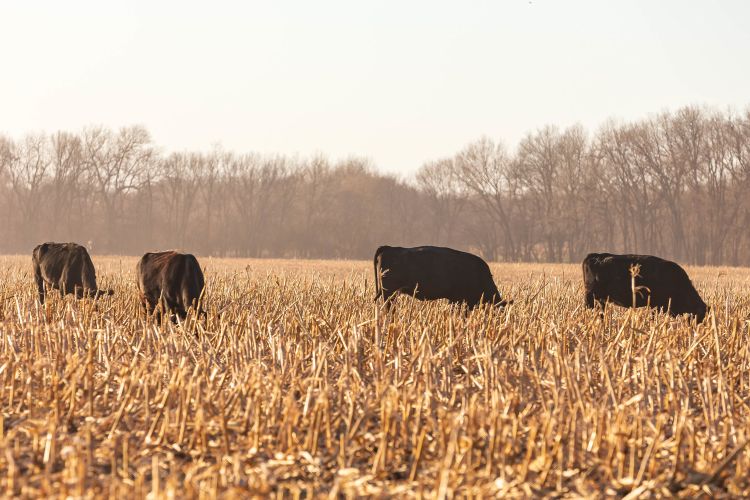Grazing corn residue: What the research says about soil health
Grazing corn residue is safe for the soil and doesn’t hurt crop performance.

After corn harvest, some farmers consider grazing cattle on the leftover stalks, leaves and husks known as corn residue. It’s a practical way to feed livestock during fall and winter, but some worry it might harm the soil or reduce future crop yields.
Two long-term studies from the University of Nebraska’s Beef Cattle Reports (Rakkar et al., 2017 and Ulmer et al., 2017) looked closely at this issue. Their findings offer reassurance: grazing corn residue is safe for the soil and doesn’t hurt crop performance.
Here’s what the research found and what it means for your farm.
Study setup: Real-world conditions over time
Researchers conducted multi-year trials in eastern Nebraska, comparing fields where cattle grazed corn residue to fields where no grazing occurred. They measured corn yields in the following growing season, soil compaction and structure, water infiltration and retention, and residue cover remaining after grazing.
The grazing occurred during fall and winter, when soils were typically frozen or dry, which are common conditions across the Corn Belt, but vary in Michigan as the climate is much wetter. Michigan State University Extension recommends avoiding this practice on saturated, unfrozen soils.
Corn yields remain strong
One of the most important findings: grazing did not reduce corn yields. Across multiple years and locations, there was no significant difference in yield between grazed and ungrazed fields. In some cases, grazed fields even produced slightly more corn. This suggests that grazing doesn’t deplete soil nutrients or disturb the soil in ways that affect crop growth. Farmers can feel confident that grazing won’t hurt next year’s harvest.
Soil compaction: Minimal impact
Cattle walking on fields can compact the soil, which might limit root growth and water movement. However, the studies found no significant increase in soil compaction from grazing. Measurements of soil bulk density and penetration resistance showed that the soil remained loose enough for healthy root development. This is likely because grazing occurred during dry or frozen conditions, when the soil is less vulnerable to compaction.
Water infiltration and retention stay stable
Healthy soil needs to absorb and hold water. Researchers tested how well water moved through the soil in grazed and ungrazed fields. The results showed no difference in water infiltration rates. This means grazing didn’t cause crusting or reduce the soil’s ability to soak up moisture. Fields remained capable of supporting crops with good water availability.
Residue cover: Enough remains behind
Cattle do eat some of the residue, but not all of it. The studies found that enough residue remained after grazing to protect the soil from erosion and maintain organic matter. This leftover residue helps shield the soil from wind and water, supports microbial activity, and contributes to long-term soil health. Researchers noted that residue removal was modest and did not excessively expose the soil surface.
Practical takeaways for farmers
These studies offer clear guidance for farmers considering residue grazing:
- Grazing corn residue is a safe and effective practice. It provides feed for cattle without harming soil health or crop yields.
- Timing matters. Grazing during dry or frozen conditions helps minimize any risk of compaction.
- Residue management is key. While cattle remove some residue, enough remains to protect the soil—especially when stocking rates are managed properly.
Final thoughts
Grazing corn residue is a win-win for livestock and land. It turns a byproduct into a valuable feed source while keeping soil productive and resilient. The University of Nebraska’s research shows that with proper management, farmers can confidently use residue grazing as part of a sustainable system.
A word of caution: It is important that any spills from the combine be cleaned up before grazing crop residue. Cattle can eat too much of the spilled corn and have health impacts.



 Print
Print Email
Email